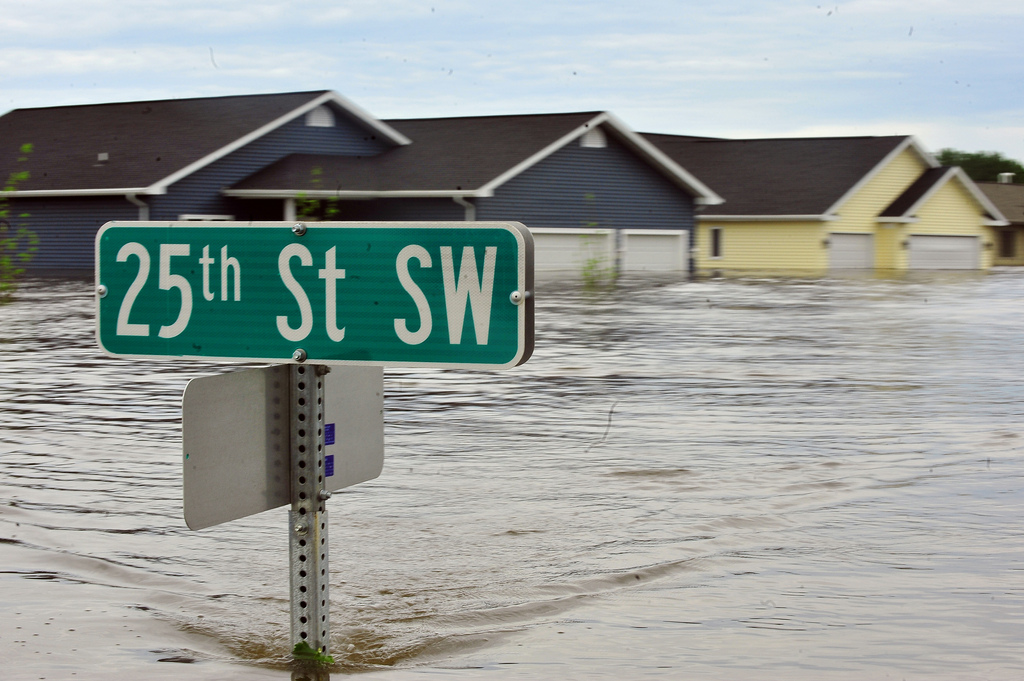 After years of drought, Bay Area residents now face the threat of torrential rain this winter with the approach of El Niño storms for the first time in nearly 20 years. State agencies are already taking steps to deal with the expected flooding and declared this past week (Oct. 19-24) California Flood Preparedness Week.
After years of drought, Bay Area residents now face the threat of torrential rain this winter with the approach of El Niño storms for the first time in nearly 20 years. State agencies are already taking steps to deal with the expected flooding and declared this past week (Oct. 19-24) California Flood Preparedness Week.
Don’t wait until it’s pouring rain to make sure your home is safeguarded against flooding and your loved ones know what to do in the event of high water. Below, we list several websites that offer excellent advice in the event of flood conditions. But first, take a look at some practical guidelines:
BEFORE A FLOOD
- Most home-insurance policies don’t cover damage caused by a flood, and the government offers disaster assistance only when the President declares a major disaster. Ask your insurance agent whether flood insurance is available in your area.
- Consider installing backflow valves or standpipes to prevent sewer lines from clogging.
- If you live near a flood plain, a creek, or a river, elevate your washer, dryer, water heater, oil tank, furnace, and wiring on concrete blocks. Install a sump-pump system if you have below-grade floors. And get a flood-detection device that sounds an alarm or alerts your phone if it senses water.
- Store family items and important documents on the highest level of your home. If you live in a single-floor home, put items on shelves, tables, or countertops.
DURING A FLOOD
- Turn off utilities at the main power switch.
- Sanitize your bathtubs and sinks and fill them with fresh, clean water in case the water supply becomes contaminated.
- If you feel threatened by rising water, leave your home or move to upper floors.
- Never try to drive through a flood. It takes just 12 inches of flowing water to carry off a small car, and 18 to 24 inches for larger vehicles.
- If you are in your car when the water begins to rise quickly, abandon it and move to higher ground.
- Do not walk through flood areas; just six inches of water can sweep you away. Make sure your children know to always turn away from floodwaters.
- Avoid downed power lines.
AFTER A FLOOD
- Check for structural damage before going inside.
- If it’s dark, use a flashlight — not matches, a candle, or a lighter.
- Use your cell phone or other camera to photograph damage, which can help get an insurance claim started sooner. Take stock of damaged or destroyed items.
- Begin your initial cleanup as soon as waters recede. Separate damaged items from undamaged possesions and clean and disinfect everything that got wet. When cleaning, wear a mask, gloves, and coveralls to minimize exposure to possible hazardous materials.
- Mold can be a hazardous result from a flood. Consider a professional service that specializes in post-flood cleanup.
For more specific information, check out these websites:
The California Department of Water Resources is responsible for flood safety preparations in the state and has an excellent website that explains the dangers we face and the resources to help us recover. Make it your first stop online.
Next, My Hazards, maintained by the Governor’s Office of Emergency Services, lets you easily determine if your home is near a flood plain. (It also identifies earthquake, fire, and tsunami zone hot spots.)
Official flood-zone maps are available online from the Federal Emergency Management Agency. Additionally, the Insurance Institute for Business and Home Safety identifies weather and natural disaster risks by ZIP code.
When inclement weather approaches, check out the National Weather Service’s Bay Area forecast website for a summary of current conditions and forecasts, detailed maps, preparedness information, and useful links. And for an explanation of what El Niño is all about, visit the NOAA El Niño Portal page.
FEMA’s FloodSmart website is the official site of the National Flood Insurance Program and an excellent resource for information on flood dangers and recovery. One of the interactive tools on the page shows the cost of a flood to your home, inch by inch. Flooding of just 6 inches in a 2,000-square-foot home, for example, can cost nearly $40,000 — including more than $15,000 for damaged flooring and carpeting alone.
Another FEMA website has a roundup of federal flood-insurance information for property owners, including an online claims handbook, how to find an agent, how to file a claim, and disaster-support resources.
(Image: Flickr/DVIDSHUB)

